Problem & Solution
Problem
& Solution
Hospital Acquired Infections are the most frequent adverse event in healthcare delivery worldwide, affecting 7% of patients in developed countries each year. World Health Organization HAI Fact Sheet, 2014
Eliminating bacteria is one of the most important sterilizing challenges hospitals face. Currently, in the US alone, in-hospital infections claim about 90,000 lives a year, infect over 2 million people yearly.
The Drain Barrier – the easy way to ensure infection-free sinks and healthy institutions.

The Role Of Biofilms In Hais
Biofilms are colonies of microorganisms that grow on living surfaces as well as non-living surfaces like medical devices. Responsible for an estimated 50% of all nosocomial infections, biofilms are particularly dangerous because they’ve demonstrated both immune system resistance and antimicrobial resistance.
Biofilms are colonies of microorganisms that grow on living surfaces as well as non-living surfaces like medical devices. Responsible for an estimated 50% of all nosocomial infections, biofilms are particularly dangerous because they’ve demonstrated both immune system resistance and antimicrobial resistance.
Once you have the biofilms in there, short of ripping the sinks and the piping out, it’s impossible to get rid of
DR. Alex Kallen, CDC
Once you have the biofilms
in there, short of ripping
the sinks and the piping
out, it’s impossible to get
rid of
DR. Alex Kallen, CDC
The problem is serious
The problem is
serious
We are in an era of antimicrobial resistance. When bacteria don’t respond to antibiotic treatment methods, it becomes even more critical to protect vulnerable populations from encountering them.
But hospitals and researchers have not yet found a viable solution to the danger posed by biofilms in the plumbing. Clinical testing of a variety of disinfectants and cleaning methods have all come up short, and most preventative measures have met with failure or are prohibitive in cost and implementation.
Researchers have concluded that the solution lies in the design of the sink itself, making sure that the bacteria proliferating in the biofilm can not enter the hospital environment and endanger at-risk patients. That’s where capitalizing on natural physical laws has transformed the situation. Physiclean works in the sink itself, by not allowing contaminants back into the building.

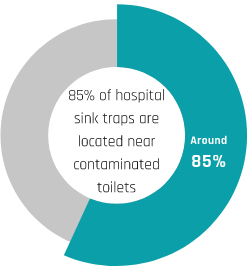


Sink Traps: A Dangerous
Source Of Infection
Sink Traps: A Dangerous Source Of Infection
We don’t like to think about all the gunky water-sitting in the pipes right beneath our sink drains. But it’s there. Our sewage systems are built with a trap, a section that ensures that the water and its impurities flow into the sewage system, while keeping dangerous and smelly sewage gasses out. In this very section, as well as lower down in the sewer, a cocktail of bacteria grows into biofilm that is like a super organism.
Stronger and more dangerous than each type of bacteria on its own, this biofilm creeps back into the sink itself and is extremely resistant to eradication. And what’s worse, bacteria from this biofilm is flung into the air at a greater velocity when water flows from the sink, as in when washing hands. So, the critical act of hand-washing can have the unintended opposite effect.
Numerous studies have shown that biofilm is almost impossible to remove.
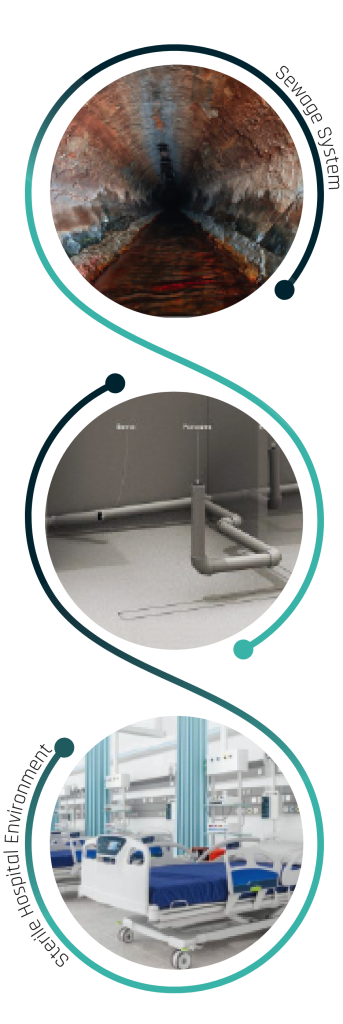
Sterile hospital rooms above/ pipes teeming with infection below.
Sterile hospital rooms
above/ pipes teeming
with infection below.
We work hard to ensure that our hospital environments are sterile. Indeed, our capability to avoid transmission of disease, and illness or death of patients from HAI depends upon our success.
Right below, flowing through the sewage, lies a world of pathogens, dangerous to all – but especially to those of weakened immune defenses.
Today, infection easily infiltrates through drains.
There are direct connections to this underground hotbed in almost every hospital room: through toilets, sinks, showers that enable pathogens to enter the environment through aerosol when water is activated, or biofilm growing back towards the opening.
HAI is a winnable war.
Currently, HAI is the 3rd highest cause of death in Israel – and the 5th highest in the world. In order to reduce these numbers, we need to close the connection between these two environments.
Stop infection
in its tracks
Stop infection in its tracks
We’ve all become painfully aware of how deadly infections can be.
Hospital acquired infections (HAI) kill patients in even the best hospitals around the world, attack millions yearly and cost hospitals billions in health care expenditures. And it seems that our hygiene may be causing the problem: research uncovered that viruses and bacteria are proliferating in our innocent looking sinks from hand washing or from dumping fluids into the washbasin. They form antibiotic resistant biofilms in the plumbing that are impervious to cleaning measures and easily infect patients with reduced immune systems. Our low-cost, patented, anti-bacterial, mechanical system stops bacteria at the point where they fester and spread.
The Drain Barrier solution
The Drain Barrier
solution
At Physiclean, we solve the problem elegantly. Harnessing simple physics, only technical simple solutions, we designed a solution that pushes bacteria and infection down the drain, and hermetically blocks its way into the building. Other solutions on the market demand a high investment from the institution, as well as electrical connections and complicated installation. Our patented device can be easily fitted to one or two sink systems to immediately eliminate the danger of bacteria making its way back and infecting residents. It’s a foolproof solution with proven efficacy in clinical trials.



Studies And
Experiments
Studies And Experiments
Physiclean device was tested in two clinical experiments in two different government hospitals in Israel, and in both experiments it has significant efficiency.in Shiba hospital out of 10 different interventions, he was the only one who kept a clean environment for more than 3-month steak.
Experiment Of
Sheba Hospital
Infectious Diseases
Experiment Of Sheba Hospital Infectious Diseases
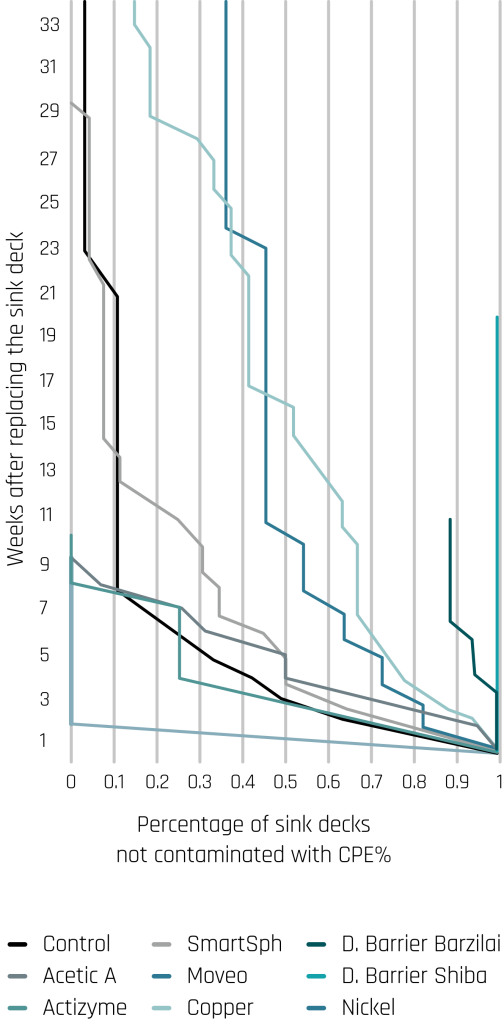
Drain Barrier stops biofilm in its tracks
Experiment Of Sheba Hospital Infectious Diseases
Experiment Of
Barzilai Hospital
Infectious Diseases
Experiment Of Barzilai Hospital Infectious Diseases
INTERVENTION programs for the prevention of bacteria and germs from the sewage system.
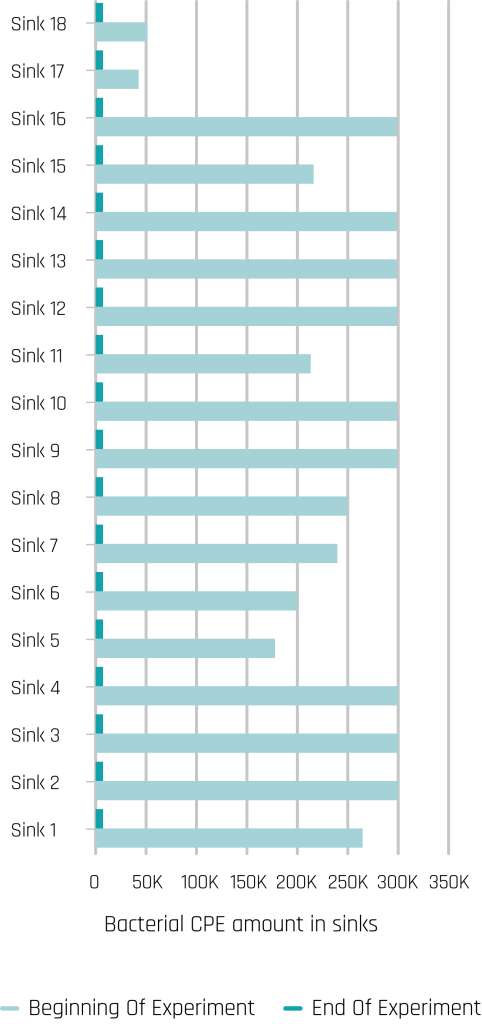
Bacterial count comparison in sinks at Barzilai hospital experiment
Before and after Physiclean devices intervention
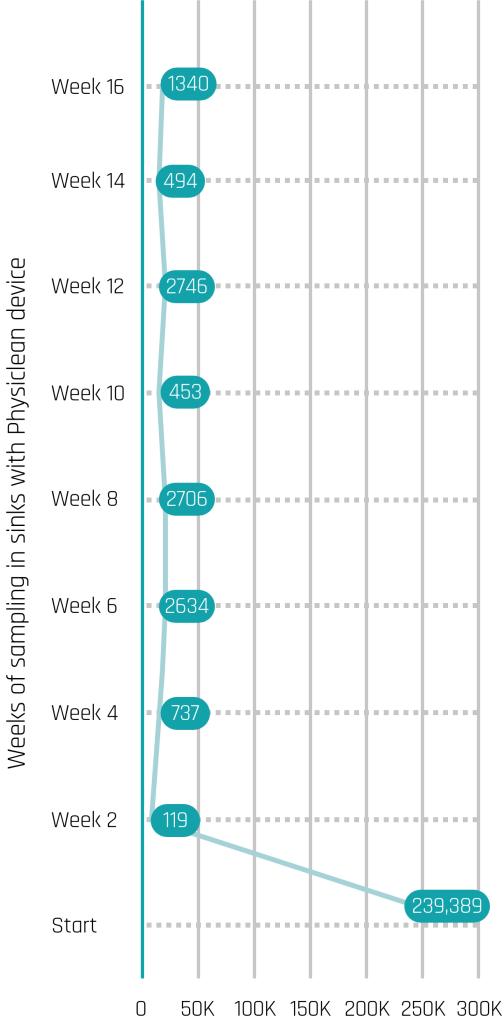
Weeks of sampling in sinks with Physiclean device
The average bacterial CPE amount samples from sinks
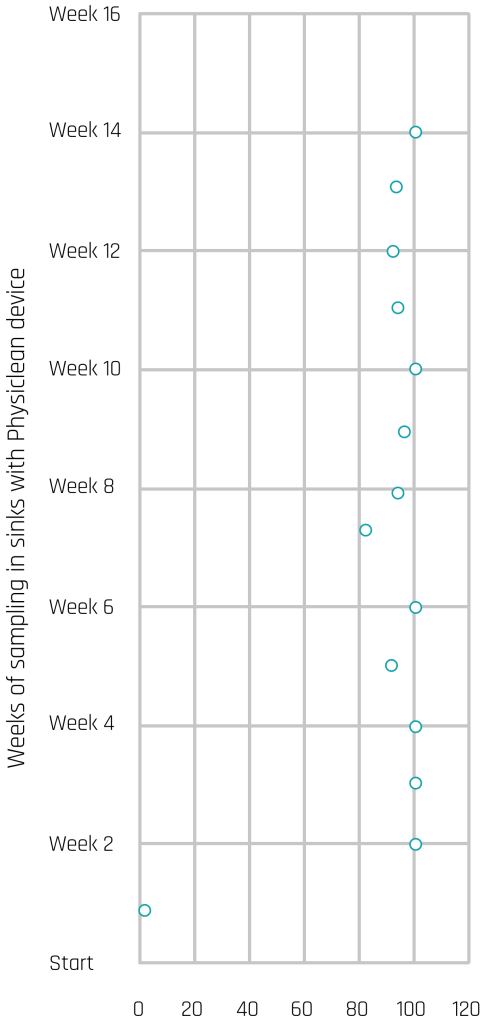
Weeks of sampling in sinks with Physiclean device
Percentage of clean sinks
A Huge Business Opportunity That Solves A Huge Health Problem.
Hospital Administrators And Managers Of Large Institutions Understand The Danger Posed By Biofilm. These Professionals Require An Easy To Implement Solution That Can Become The Standard Of Hospital And Institutional Hygiene. Our Device, With An Affordable Price Point That Costs Exponentially Less Than Competitors, Makes It Possible For Institutions To Easily Provide Greater Protection To Their Populations. It’s A Good Product That Does Good.
Our focus should be on
optimizing sink design
to prevent microbial
transmission
Sink Related Outbreaks and Mitigation Strategies in Healthcare Facilities.
LeighAnn Parks, McGill University and Susie Hota, University Health Networks.
Our focus should be on optimizing sink design to
prevent microbial transmission
Sink Related Outbreaks and Mitigation Strategies in Healthcare Facilities.
LeighAnn Parks, McGill University and Susie Hota, University Health Networks.
